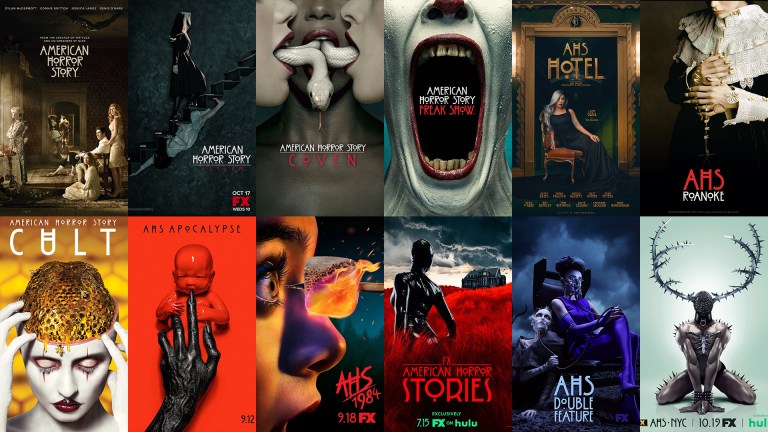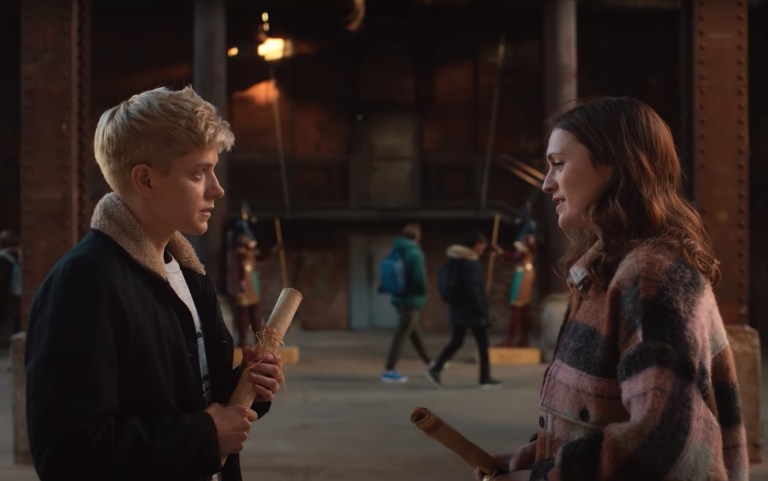This Season of ‘How To Get Away With Murder’ Wasn’t For Straight White Men And That’s Necessary
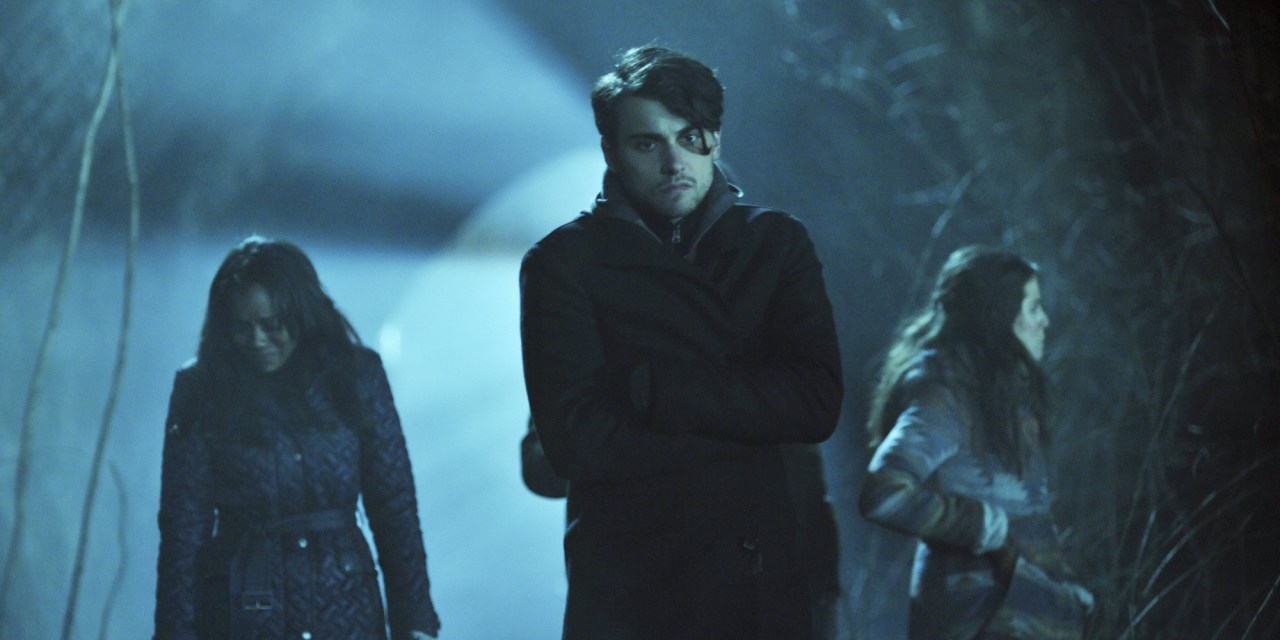
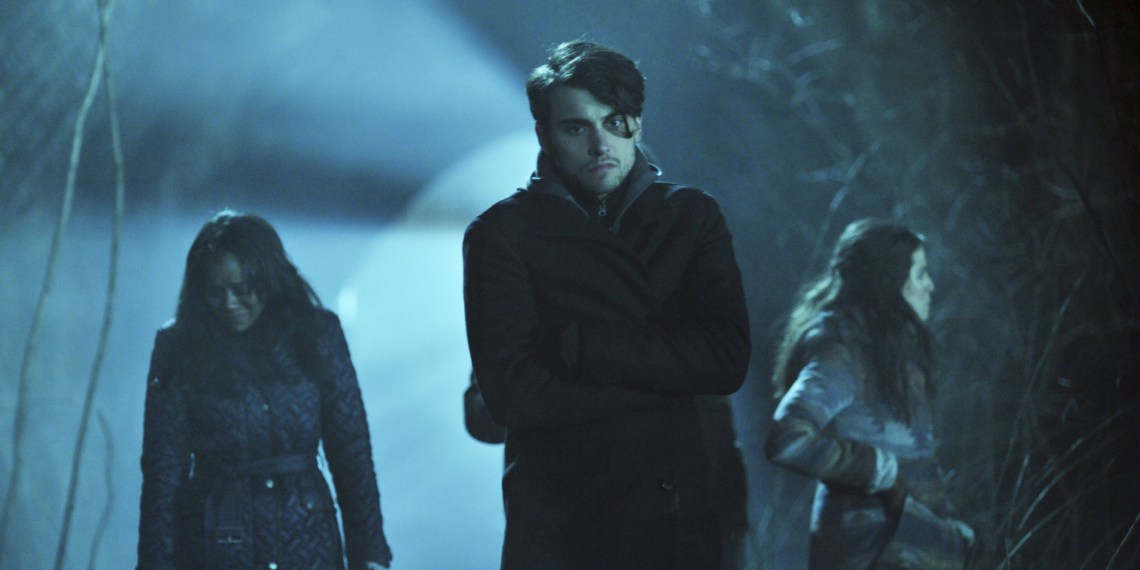
When was the last time your professor told you that you were garbage? When was the last time that same professor unofficially renamed your intro-level course to “How To Get Away With Murder” and repeated the phrase throughout the semester, as if daring you to do so?
Well, here we are. Wrapping on season two of How to Get Away with Murder, the little Shondaland show that found its homicidal footing among sister series’ Grey’s Anatomy and Scandal.
The dynamic engine of midseason-long murder nights are lovely and suspenseful and, yes, those massive reveal episodes have me throwing all sorts of electronics and food across my studio apartment when the big bombs go off. I spent the better part of last year gripping with alarming strength into my couch cushions, palms sweating, whenever Connor Walsh (Jack Falahee) explained why his gay dating app’s screen name “8 Is Great” to a straight dude; almost blackout when he shades someone with quips like, “you’re too old to be a twink” to the resounding response of doors being slammed in his face, and I was cited with a noise complaint by my neighbor when I spent 45 minutes screaming “YAAAAS KWEEN” when Oliver sternly informed Connor that “tonight I do you.”
I grew up seeing gay people off hand, on Will & Grace, or under the cover of darkness after everyone was asleep (my face inches from the screen because the sound was so low, finger hovering over the remote’s on/off button) on Queer as Folk, and those neutered guys on Modern Family. But, with the exception of QAF, I never saw my truth, or at least the truth I thought I wanted when I was 13-years-old. Rarely are LGBT+ stories given the weight and depth of our straight contemporaries. When you aren’t a straight, white man, you learn you can’t expect to be represented in media accurately, or even at all. One can’t even count on a little gay-pda on a show starring two gay characters (cough, Modern Family, cough). Meanwhile, hetersexual sex is shoved in our faces six ways from Sunday.
“There are no GAY scenes. There are scenes with people in them,” Shonda Rhimes clapped back on Twitter when confronted by one viewer not on board with fully actualized gay-representation on the show. “If u use the phrase ‘gay scenes,’ u are not only LATE to the party but also NOT INVITED to the party. Bye Felicia. #oneLOVE.”
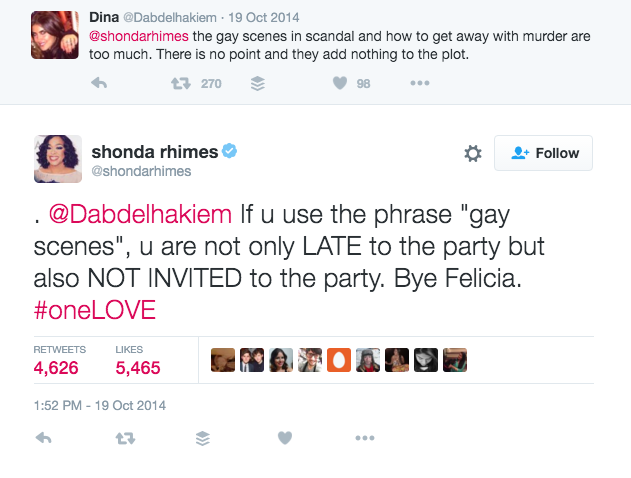
For black women, Viola Davis’s Emmy Award Winning portrayal as Annalise Keating is a departure from the stereotypical, one-dimensional roles that are often afforded to black actresses. With the 2015-2016 backdrop of the #BlackLivesMatter Movement, and the visual anthem that is Beyoncé’s “formation,” black storytelling was at the forefront of this season. And quite frankly this season of HTGAWM wasn’t for white people. It wasn’t for white people. It wasn’t about white people. And that is necessary.
It’s necessary for audiences to see a wider array of experiences be depicted on television, particularly the experiences of those being discriminated against the most. The more representation different groups of people get, the less we differentiate ourselves from one another, and the more we champion each other. Other series have gone as far as to attempt to recreate the groundbreaking storytelling of Shonda Rhimes. Freshman Netflix series Grace and Frankie depicted actress Jane Fonda taking off fake eyelashes—a moment that was meant to move us as much as Viola Davis’s wig removal did. Spoiler: it didn’t. No tea, no shade, Jane. This is a show that has Viola Davis literally eating spilled yogurt off a crime scene photo, and she still makes you cry.
By that same token, the characters of HTGAWM aren’t wholly defined by their blackness, it is just one more aspect of their experience. In one memorable episode early on in the season, Annalise, and the rest of Murder INC., attempt to use video footage in order to discredit a witness of the prosecution, who, as it turns out, is racist. Unfortunately because it was discovered via hacking, it isn’t admissible. But, then Catherine (who is Asian-American), the accused, about loses her damn mind and calls out the judge for being black, and the judge goes full logic back at her and says that she has to uphold the law. Annalise broke the law, and she isn’t pardoned from doing so, because of her blackness, by a black judge on a “black show.”
The show is as much a gay or black show as it is a feminist one. The women are given the room to do more, and be more. This season started with viewers rooting for 27-year-old law student Michaela to finally achieve an orgasm, to those same viewers being put on suicide watch, over the revelation that Annalise lost her baby at childbirth. The series portrayal of the realities of miscarriages, and sexual assault have been among the most honest on TV. The experiences the show depicts are ones women go through more often than anyone would like to think, and it’s important to showcase the struggles that women have.
One of the season’s strange, quasi-developed through lines was Frank’s damage with Laurel, which went from cautiously optimistic to mission critical, when he revealed he killed Lila and she decided it was just about the worst thing he ever did. Well, fuck that, because it turns out the worst thing Frank did was rat-out Annalise for a bag of money and as a result, led to the death of her unborn child.
Now, let me be clear: This is truly, easily the worst thing that has ever been done on How to Get Away with Murder. This isn’t an annoying sorority girl getting drowned or her awful friend with four cornrows getting smothered in a basement or an adulterous psychiatrist getting his remains set on fire in a forest or an annoying ADA with an ill-kept bob getting run over by a car and then thrown off the roof of a mansion—And yes, all of that happened on this show. The loss of their child is the catalyst in a series of events that leads to the death of Annalise’s marriage, and it’s this key element that brings the last two seasons full circle, and makes this batshit show relatable.
P.S., concerning the Caleb of it all, I refuse to call that final frame anything but a suicide. There’s no justifiable reason for anyone to have killed him, and as much as I love the Shonda-Coaster, if we begin season 3 with a flashback to Bonnie, like, crouching inside the cabinet under the sink, I’m out.
P.P.S., I find it hard to believe that nobody has a problem hanging out at Wes’s janky-ass apartment. Step up, Laurel, we’ve seen your house.
